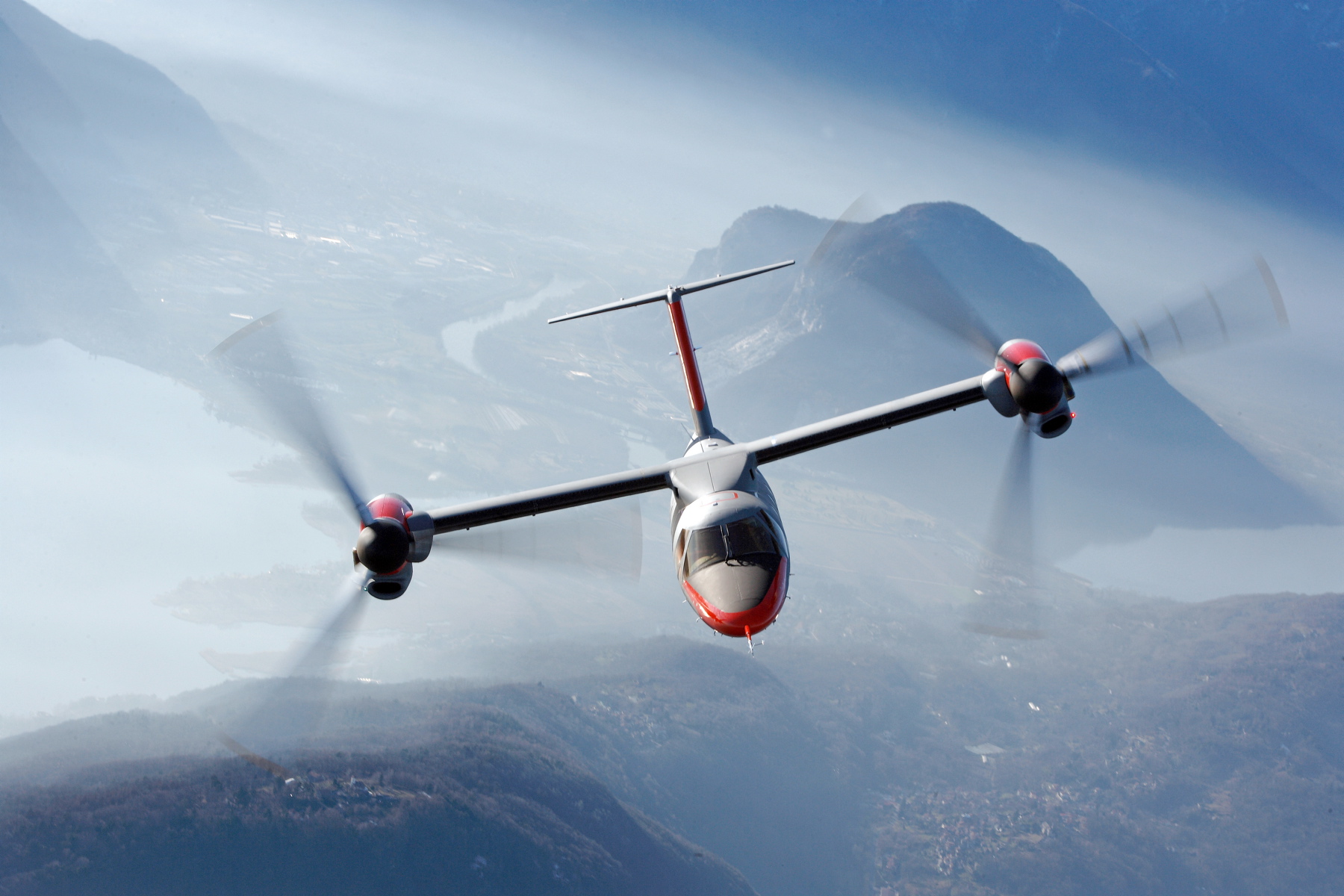Scientific Background
The need for affordable and accountable tools for computational fluid dynamics is constantly pushing the edge. As result the research for efficient and accurate numerical schemes is still of key importance for the aerospace comunity. To this end the simulation of the flowfield developing around an helicopter is one of the most challenging tasks.
Scientific Background
Because of their unique maneuvering capabilities modern helicopters play an important role in a wide variety of tasks, in either civilian or military applications. Numerous research projects are currently being carried out to further extend the range of applications of helicopters and to reduce their environmental impact, especially in terms of noise emission [9]. To this purpose, it is necessary to develop new design tools which are capable of predicting accurately and efficiently the complex aerodynamic flow field generated by the helicopter main rotor. Such a flow is highly three-dimensional and unsteady. Due to the superimposition of the advancing and rotational velocity of the blade, the rotor flow is characterized by a transonic region at the tip of the advancing blade and by dynamic stall and reverse flow over the retreating blade. Furthermore, the vortical wakes shed by the blades strongly influence the operating characteristics of the rotor. For these reasons the aerodynamic analysis of rotorcraft flows still represent one of the most challenging problem in modern Computational Fluid Dynamics (CFD).The first inviscid calculations of multibladed rotors were performed during the mid 1980s at the Georgia Institute of Technology [10] using a Jameson-like method with wake modeling, at DLR [11] using a wake capturing upwind scheme, and later at NASA Ames [12] and ONERA [13]. After these pioneering works the development of CFD codes for rotorcraft applications made dramatic progress thanks to both the availability of improved numerical algorithms and the growth of computer speed and memory. During the 1990s the emphasis was put on viscous flows. Navier-Stokes solvers for rotors in hover were developed at Georgia Institute of Technology [14] and at NASA Ames [15,16] in the USA, in Europe [17,18] and in Japan [19].
 Figure 1. AW139, source www.agustawestland.com. |
 Figure 2. BA609, source www.agustawestland.com. |
|
| Click on the image to enlarge | Click on the image to enlarge |
Note that over moving domains, standard finite volume Eulerian formulation of the flow equations is to be dismissed in favor of the so-called Arbitrary Lagrangian-Eulerian (ALE) approach, in which the control volumes are allowed to change their shape in time [24]. Moreover, the rotor aerodynamic behavior is strongly influenced by flight conditions, including the blade cinematic corresponding to the required trimmed configuration, as well as by the blade elastic deformation, that can significantly change the aerodynamic performances. Hence a coupling procedure of the aerodynamic field with the dynamics of the blades is mandatory [20,21,22,23]. Finally, since the computational domain is continuously changing its shape, a new grid complying with the new domain geometry is to be constructed at each time level. To this purpose, for small displacements as those usually occurring in computational aeroelasticity (CA) simulation of fixed-wing aircrafts, it is usuallysufficient to slightly reshape or deform the initial grid into the new geometry, without changing the grid connectivity and number of nodes. Very efficient algorithm are usually obtained in this case.
In the case of the arbitrary (large) displacements occurring in rotorcraft, the algorithm usually adopted in standard CA applications cannot be used. A possible strategy to address this problem is the Chimera technique [25], which has been successfully applied to rotorcraft aerodynamic simulations [26]. The Chimera approach is coded in the flow solver named ROSITA (ROtorcraft Software ITAly) developed by prof. Luigi Vigevano and collaborators at the Aerospace Engineering Dept. of Politecnico di Milano, which is capable of performing unsteady Reynolds' AveragedNavier-Stokes computations over complex helicopter configurations, see Figure 3.
The ROSITA code is currently used by Agusta Westland, one of the major rotorcraft industries worldwide.
The development of a new CFD software overcoming the limitations of currently available tools is the goal of the present reserch project. The aerospace department of Politecnico di Milano is closely collaborating with Agusta Westland in the design and testing of new helicopters and tiltrotors configurations. Agusta Westland is the main user of our Large Wind Tunnel facility, featuring a 4x4x6 m test section and flow velocities up to 60 m/s, one of the largest facility in Europe.
 Figure 3. ROSITA, effects of pylons and walls on the measurements. Pressure. |
Figure 4. Rotor wake computed by panel method NUVOLA. | |||
| Click on the image to enlarge | Click on the image to enlarge |
